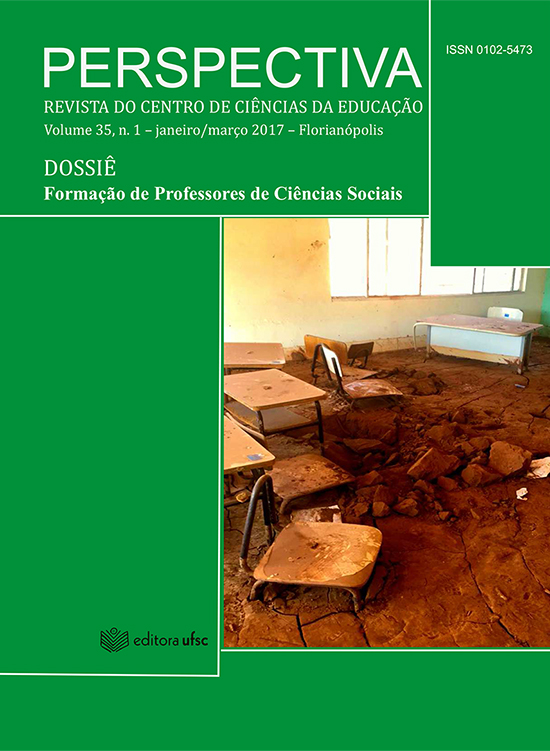Meninos que brincam com bonecas viram meninas? Diferenças de gênero nas brincadeiras de crianças de 4 a 5 anos
DOI:
https://doi.org/10.5007/2175-795X.2017v35n1p262Resumo
O presente artigo é fruto da pesquisa realizada para o Trabalho de Conclusão de Curso (TCC) de Pedagogia, cujo tema é Gênero na Educação Infantil. Buscou-se conhecer como as crianças interagem com brinquedos trazidos de casa ou presentes na escola, bem como perceber se há diferença na escolha dos brinquedos por meninos e meninas. Além disso, investigou-se se haveria relação entre as cores presentes nos brinquedos e as diferenças de gênero. Trata-se de uma abordagem de cunho qualitativo, uma vez que nos interessam as expressões, movimentos e as falas das crianças em sua singularidade. A metodologia utilizada foi a cartográfica, que permite uma escuta sensível, um olhar atento sobre os territórios a serem investigados. Foram feitas observações e registros das atitudes e reações das crianças nos momentos de brincadeiras na escola, livres ou definidos pela investigação. A pesquisa revelou que a marcação das diferenças de gênero não são propostas pelas crianças, mas pelo meio em que estão inseridas, especialmente pelos pais e pela sociedade em geral. Percebeu-se, também, que a partir do momento em que se coloca a temática em discussão, as crianças parecem entender e questionar os estereótipos de gênero presentes no contexto por meio dos brinquedos. Entendem, igualmente, que o brincar é uma expressão livre, que não precisa ser marcada pelos estereótipos de gênero. Ao final, destacamos que os estudos de gênero merecem mais atenção por parte dos pesquisadores da Educação Infantil e que a temática precisa ser mais discutida por todos os envolvidos.
Downloads
Publicado
Como Citar
Edição
Seção
Licença
Esta revista proporciona acesso público a todo seu conteúdo, seguindo o princípio de que tornar gratuito o acesso a pesquisas gera um maior intercâmbio global de conhecimento. Tal acesso está associado a um crescimento da leitura e citação do trabalho de um autor. Para maiores informações sobre esta abordagem, visite Public Knowledge Project, projeto que desenvolveu este sistema para melhorar a qualidade acadêmica e pública da pesquisa, distribuindo o Open Journal Sistem (OJS) assim como outros software de apoio ao sistema de publicação de acesso público a fontes acadêmicas. Os nomes e endereços de e-mail neste site serão usados exclusivamente para os propósitos da revista, não estando disponíveis para outros fins.
A Perspectiva permite que os autores retenham os direitos autorais sem restrições bem como os direitos de publicação. Caso o texto venha a ser publicado posteriormente em outro veículo, solicita-se aos autores informar que o mesmo foi originalmente publicado como artigo na revista Perspectiva, bem como citar as referências bibliográficas completas dessa publicação.



